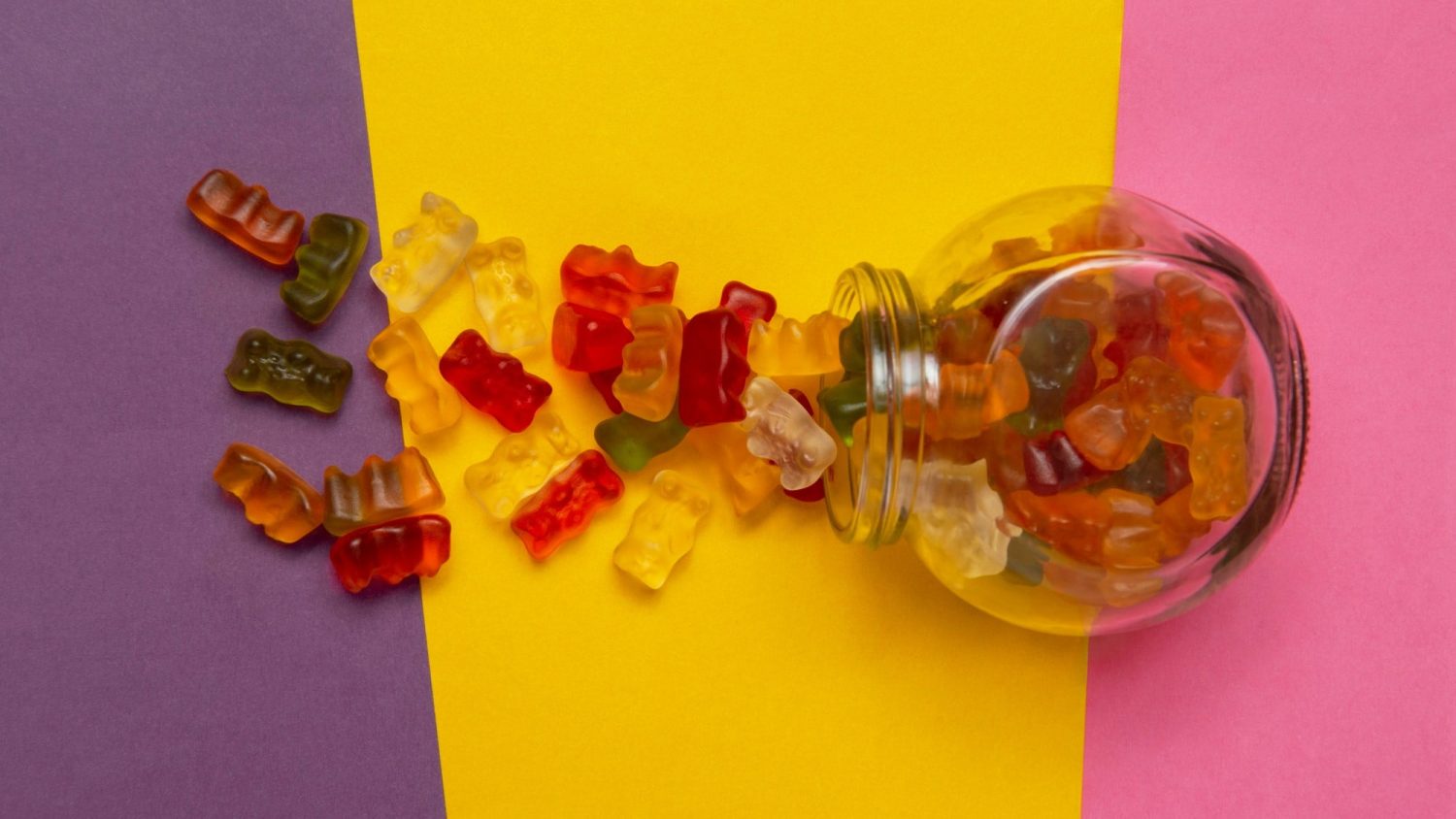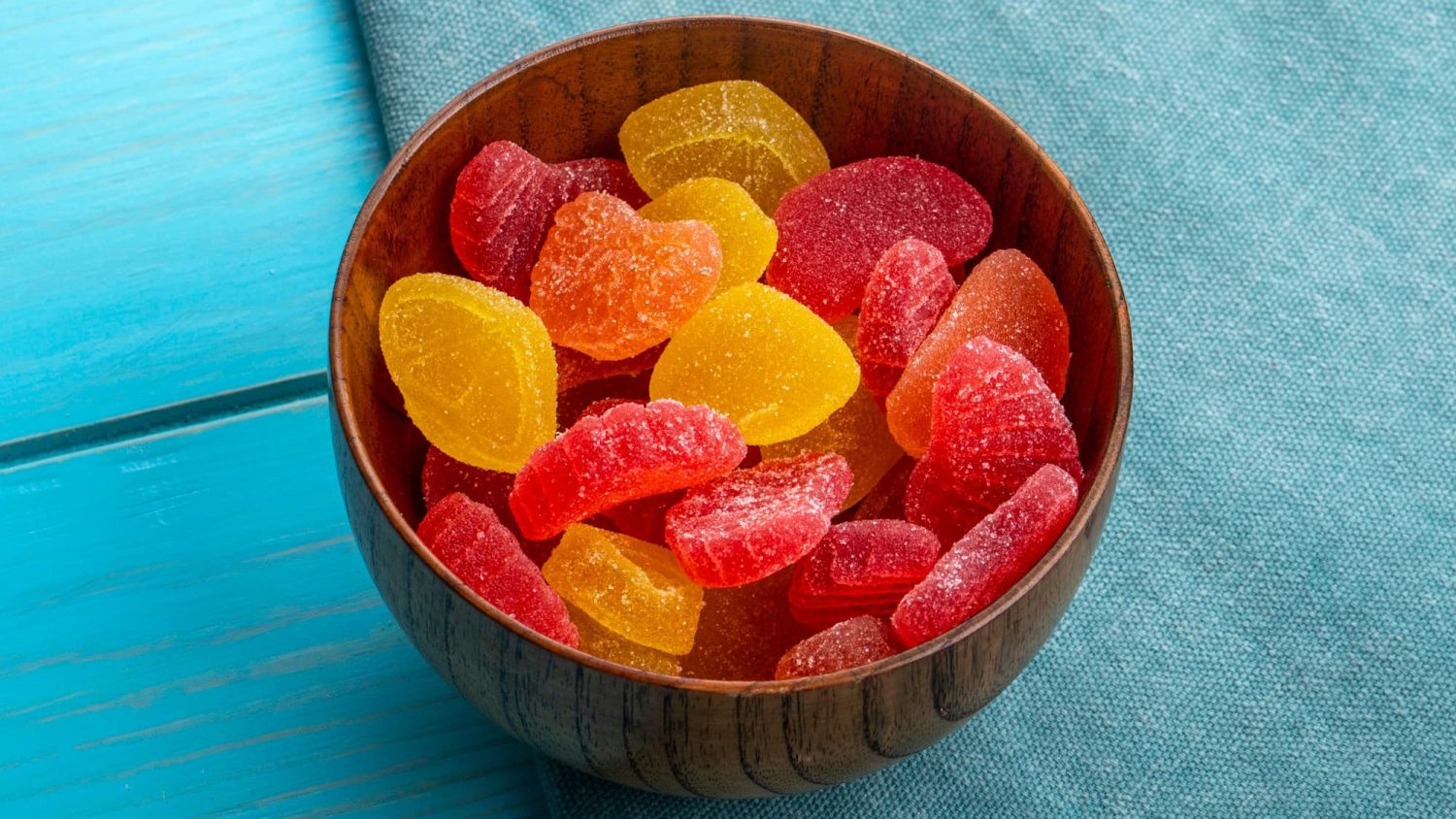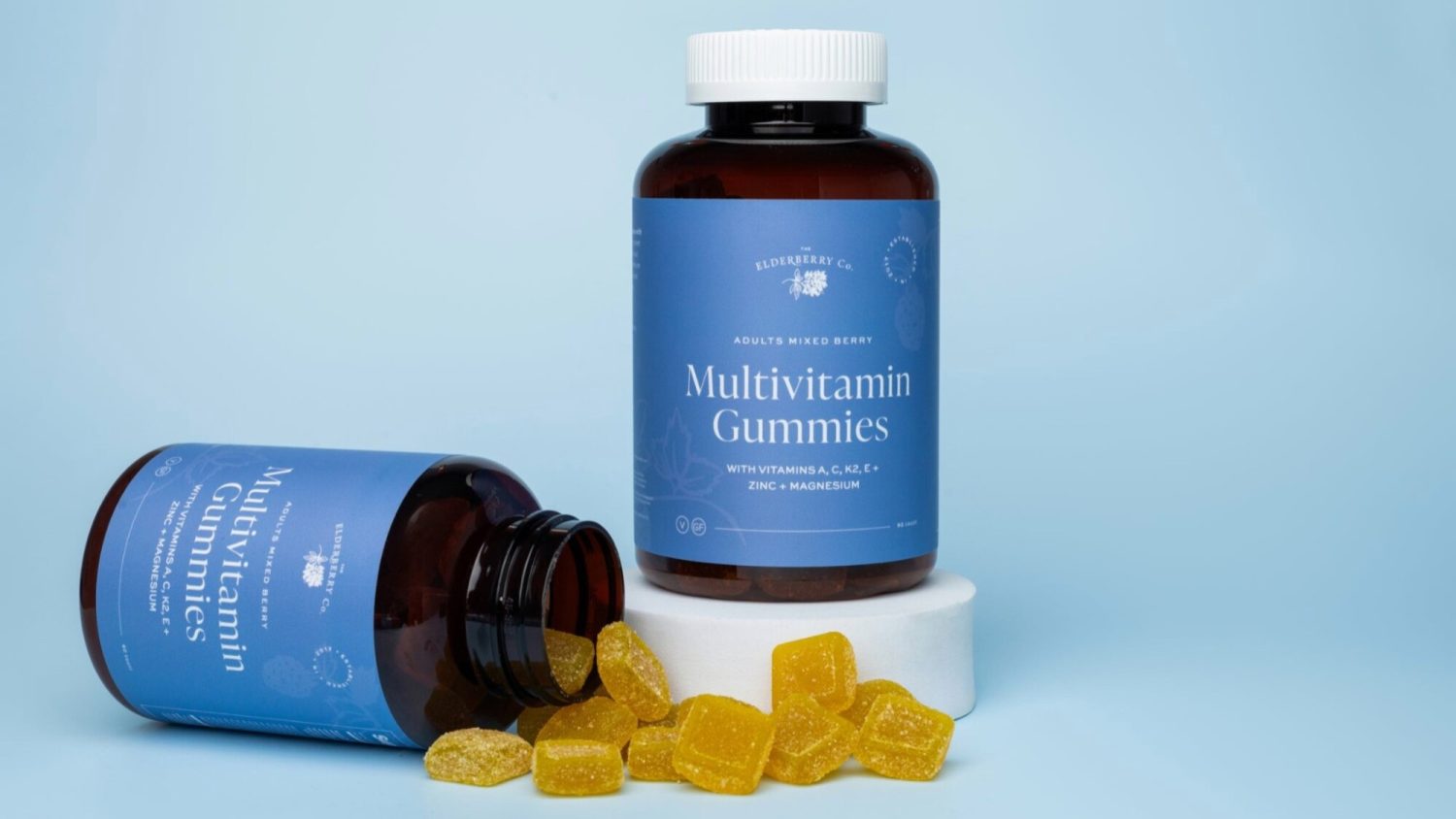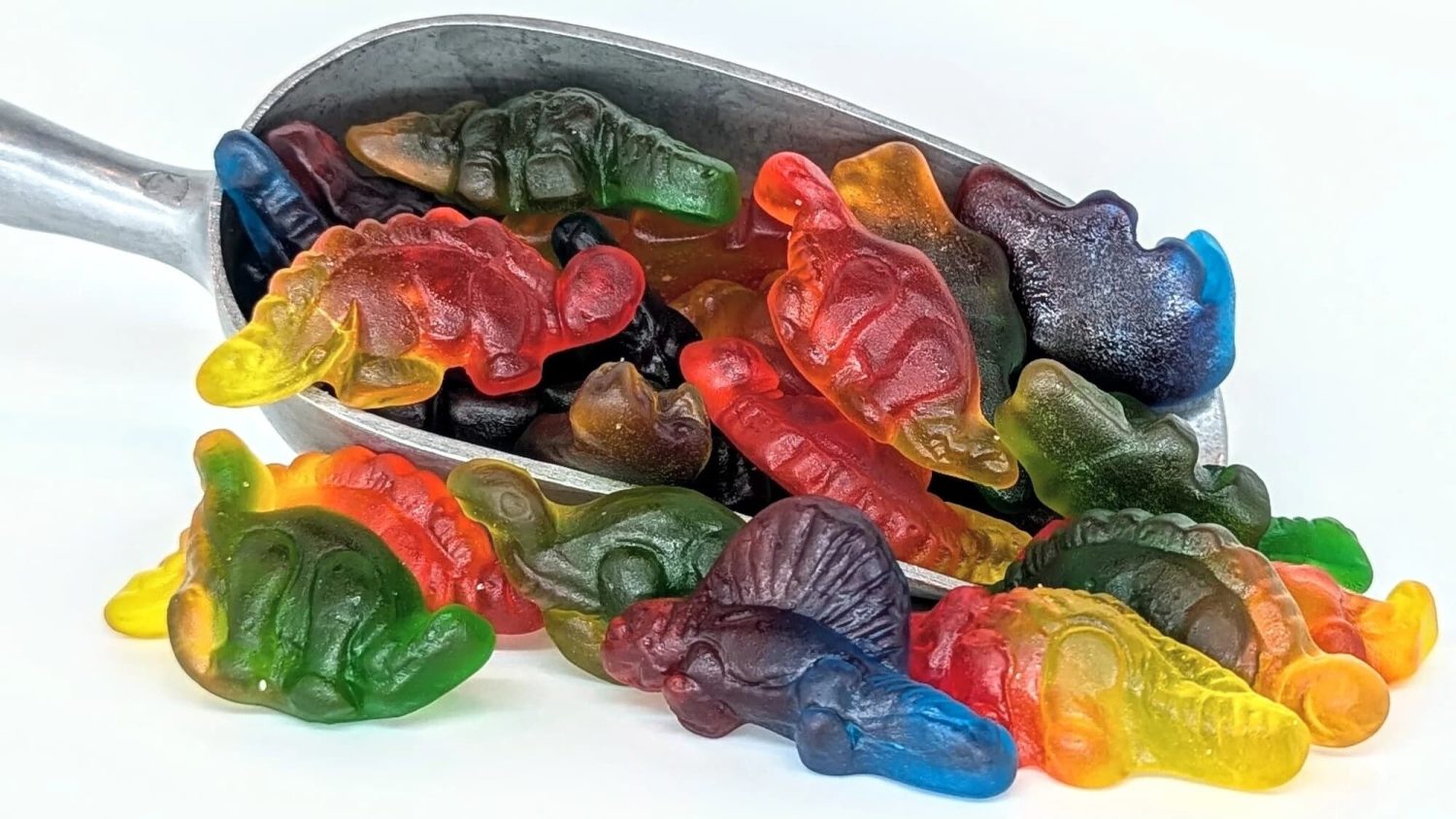
Walk down any candy aisle or supplement section today, and you’ll see many eye-catching gummy products. These chewy bites are no longer just sweet treats. They can serve more purposes, like offering you a fun way to take vitamins, supplements, and even cannabis in edible form.
For consumers, gummies are an easy, fun, and often healthier-feeling choice compared to pills or syrups. For manufacturers, gummies are a booming product category.
So, how do you make sense of the different types of gummies on the market? Let’s explore the gummy galaxy and find out what makes each unique.
Types of Gummies by Ingredients
Chewiness is what makes gummies unique. This signature texture comes from the ingredients used to make them. So one of the easiest ways to tell different types of gummies apart is by their base. Here are the most common gummy bases:
Gelatin Gummies
The classic base for gummy candies is gelatin. This ingredient, usually from animal collagen, gives gummies a springy, chewy bite. Gummy bears, worms, and most traditional candy gummies fall in this category. They’re tasty, but not a fit for vegetarians or vegans because gelatin is made from animals.

Pectin Gummies
Unlike gelatin, pectin comes from plants, mainly fruit peels and pulp. This gelling agent can create a slightly softer but still chewy gummy. If you’re a vegetarian or vegan, these gummies are a great choice because they’re free from gelatin and other animal products. Many vegan gummies use pectin. They’re just as tasty but a little less “bouncy” than gelatin ones.

Agar Gummies
Agar-agar is another plant-based option. Made from seaweed, it can produce a firmer jelly-like chew. Agar gummies are less common than pectin ones. Because the extraction process is more complex and the yield is lower, agar is much more expensive than gelatin or pectin. So, it’s often used in premium vegan gummies.
Fruit Juice Gummies
Some gummy candies use real fruit juice or puree as a key ingredient. The gummy base can be gelatin or pectin, but the highlight is their natural fruit-derived flavor and color. For example, many kids’ gummy brands often market themselves as “natural” or “no artificial flavors.”
Types of Gummies by Purpose or Function
Functional gummies are a huge trend in recent years. They look and taste like candy, but are made for wellness and supplementation.
Vitamin Gummies
If you take vitamins daily, gummies can make the routine easier and more fun. They can be packed with nutrients, like vitamins A, C, D, E, B-complex, and minerals like zinc, iron, and calcium.

Supplement Gummies
These “boosted” gummies are made for people who want to get their supplements without feeling like they’re taking medicine. Some popular examples include:
- Probiotic gummies: Usually pectin-based and formulated with live bacteria for gut health
- Omega-3 gummies: Made from fish oil or algae for heart and brain health, a kid-friendly alternative to fish oil capsules
- Collagen gummies: Marketed for skin, hair, and joint health
- Energy gummies: Contain B12, electrolytes, or caffeine, an alternative to energy drinks
Infused Gummies
You might be more familiar with the names: CBD and THC Gummies. They’re infused with hemp or cannabis extracts and are taken for sleep, stress relief, relaxation, or pain management. It’s important to note that in many regions, these gummy edibles are restricted because they can cause a high.

Keep in mind: Just because these gummies are yummy doesn’t mean you can eat them like regular candy. Overdoing it on vitamin or CBD gummies can lead to unwanted effects. If you’re a manufacturer of these gummies, consistency and proper dosing are key.
Types of Gummies by Lifestyle Choice
On a diet but still love gummies? There are options made with you in mind. Two common types are:
Sugar-Free Gummies
Traditional gummies are made with sugar and corn syrup. But if you don’t want to eat too much sugar, you can opt for sugar-free gummies. They’re sweetened with stevia, erythritol, or other sugar alcohols. These components mimic the sweetness without the sugar or calories. The taste and texture are quite close to regular gummies, so you can still enjoy them guilt-free. Just remember that eating too many sugar-free gummies can cause a laxative effect. There are plenty of online reviews that prove it!

Vegan/Vegetarian Gummies
We touched on this in the ingredients section. Vegan gummies are made with plant-based gelling agents like pectin or agar rather than gelatin. These gummies are labeled “Vegan” or “Veggie” on the package so that consumers can find them easily. Also, they often use natural colors. The best part is, you won’t notice much difference in enjoyment.
Types of Gummies by Consumer Group
Gummies are loved by people of all ages, but some are formulated for a specific age group:
Kids’ Gummies
Gummy vitamins and supplements were first created for children. The idea was to make nutrition fun and easy. Today, these gummies have more fun shapes like sharks, dinosaurs, or cartoon characters. They also come in more flavors to appeal to kids. Nutritional gummies for kids are made with age-appropriate doses. For example, a children’s multivitamin gummy might have less of each vitamin compared to an adult version.

Adult Gummies
Yes, adults eat gummy bears and worms too, but there are also gummies made specifically for grown-ups. These are usually wellness-focused, like multivitamins, collagen, or CBD gummies. They tend to be less sugary and more toned-down in flavor. Compared to kids’ versions, adult gummies pack higher doses of active ingredients to match adult nutritional needs.
Senior Gummies
To cater to the unique nutritional needs of adults over 50, many brands have launched gummies specifically for older people. These gummy formulas are rich in B12, calcium, and vitamin D to support the heart, brain, and bone health of this age group. Gummies for seniors usually have a soft chew texture to make them easier to consume.
How Different Types of Gummies Are Made
No matter the bases, purpose, or target consumers, most gummies go through a similar production process. They usually follow five main steps:

1. Preparing the Ingredients
Measure and prepare your base ingredients, like gelatin, pectin, agar, sweeteners, water, or colors. For functional gummies, you also need vitamins, CBD, or other supplements.
2. Cooking and Mixing
Use a cooker to heat up and mix the ingredients. Dissolve and blend them evenly. Pay attention to the temperature. Too hot, and you damage the active ingredients. Too cold, and the texture won’t set properly.
3. Depositing into Molds
When the texture is perfect, fill the gummy slurry into molds. In commercial production, depositing machines handle this step quickly and precisely.
4. Cooling and Setting
Once molded, the gummies need a little time to hold their shape. Cool them in controlled environments. For homemade gummies, use a refrigerator. And for commercial gummies, transfer them to a cooling tunnel.
5. Demolding and Packaging
Remove the formed gummies from the molds. You can package them in pouches, bottles, or jars.
Manufacturing Considerations for Different Gummy Bear Types
| Gummy Type | Unique Manufacturing Considerations |
| Gelatin Gummies | Ensure the gelatin is hydrated before you heat and mix it.The heating temperature must stay below 80°C.If you want the gummy to be chewy, cool the mixture for over 24-48 hours. |
| Pectin Gummies | To gel properly, you need to add acid and sugar to the gummy base.Because pectin is heat-stable, it has a higher melting point than gelatin. It’s generally at least 115°C. |
| Agar Gummies | To get the desired texture, the ratio of agar, sugar, and acid should be correctly balanced.Pay attention to the pH level. Maintain it between 4.5 and 5.0. |
| Fruit Juice Gummies | Like agar versions, the gummy base, sugar, and acid must be balanced.I recommend using pasteurized fruit juice because it’s safe and can enhance the shelf life of gummies. |
| Vitamin Gummies | Vitamins are sensitive, so they must be added after high-heat cooking.For functional gummies, evenly distributed nutrients are key. |
| Supplement Gummies | Functional ingredients and the gummy base must be stable.As mentioned earlier, precise mixing and dosing are very important when making these gummies. |
| Infused Gummies | The infused ingredient like CBD or THC must be evenly mixed.Carefully measure and test the actives for potency before mixing. |
| Sugar-Free Gummies | If you use sugar alcohols to make gummies, you need to attach a laxative warning label on the packaging.Cooking temperature should be over 120°C to avoid a soft texture. |
| Vegan/Vegetarian Gummies | All ingredients must be verified as animal-free.Be strict on the production process and equipment to prevent cross-contamination. |
| Kids’ Gummies | To prevent dental issues and other health problems, use low-sugar and natural ingredients.If these are functional gummies, ensure the dose is child-safe. |
| Adult Gummies | Active ingredients should meet the desired health benefits.Since they’re not candies, doses should be controlled. |
| Senior Gummies | Formulated to be softer and easier to chew and swallow.Carefully manage the ratio of nutrients for senior health needs. |
Explore the Gummy World with Anxine
Gummies have evolved far beyond the classic gummy bear. Today, there’s a whole world of chewy creations, from fun candies to functional supplements.
If this guide gave you a few ideas, it might be time to take the next step. At Anxine, we’re ready to help you explore your gummy production options. Our team and equipment make the process easy and worry-free.
Get in touch with us anytime.